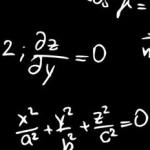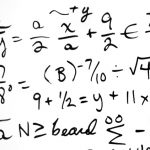Those of you who already have tested for the variance of data from a normal distribution may have asked themselves how the link between normal variance and chi-squared distribution arises. Trust me: The story, which I will tell you, is an exciting one!
Simple explanation based on population mean
The chi-squared distribution with degrees of freedom is defined as the sum of independent squared standard-normal variables
with
.
Now, the population variance is given by
An estimator for the variance based on the population mean is
In order to demonstrate the relationship to the chi-squared distribution, let’s multiply with .
Dividing by gives a z-transformation. In turn, this results in independent squared standard-normal variables for each random observation
. But this is actually the definition of the chi-squared distribution! Hence, for a known population mean the proportion between sample variance and the real underlying population variance follows a chi-squared distribution with
degrees of freedom where
denotes the sample size.
Advanced explanation based on sample observations only
Being aware that you usually don’t know the population mean. So you might be interested in proofing the claim that the sample variance is also related to the chi-squared distribution.
We make use of the relationship
and can write the sample variance as
Multiplying with gives
Rearranging the equation gives
Introducing helps to distinguish the different terms. The equation now reads as follows:
and
, because these terms refer to the population mean
and therefore are independent. The summands of
, in contrast, depend on
. However,
is calculated from
and therefore you can at maximum manipulate
of the
without modifying the sum. As a consequence,
only has
degrees of freedom. According to Cochran’s Theorem
and also the three expressions degrees of freedom must be equal. That is:
,
and
.
But also by Cochran’s Theorem (similar to
). It follows
Hopefully this explanation helped you to get an idea why for the variance there is a relationship to the chi-squared distribution 🙂

 (6 votes, average: 4.83 out of 5)
(6 votes, average: 4.83 out of 5)







Leave a Reply